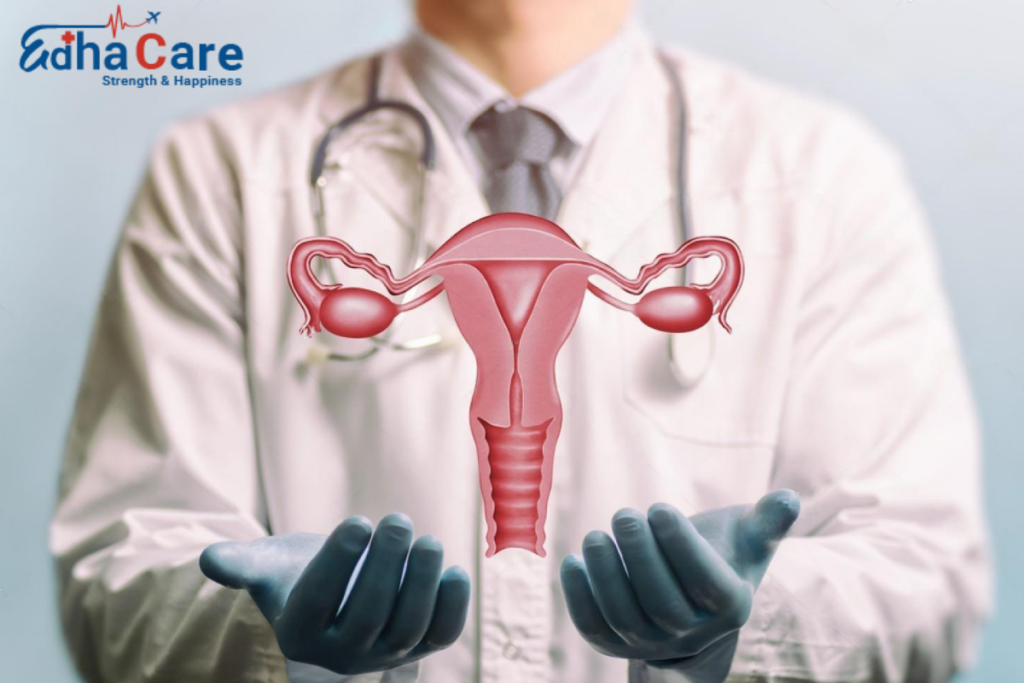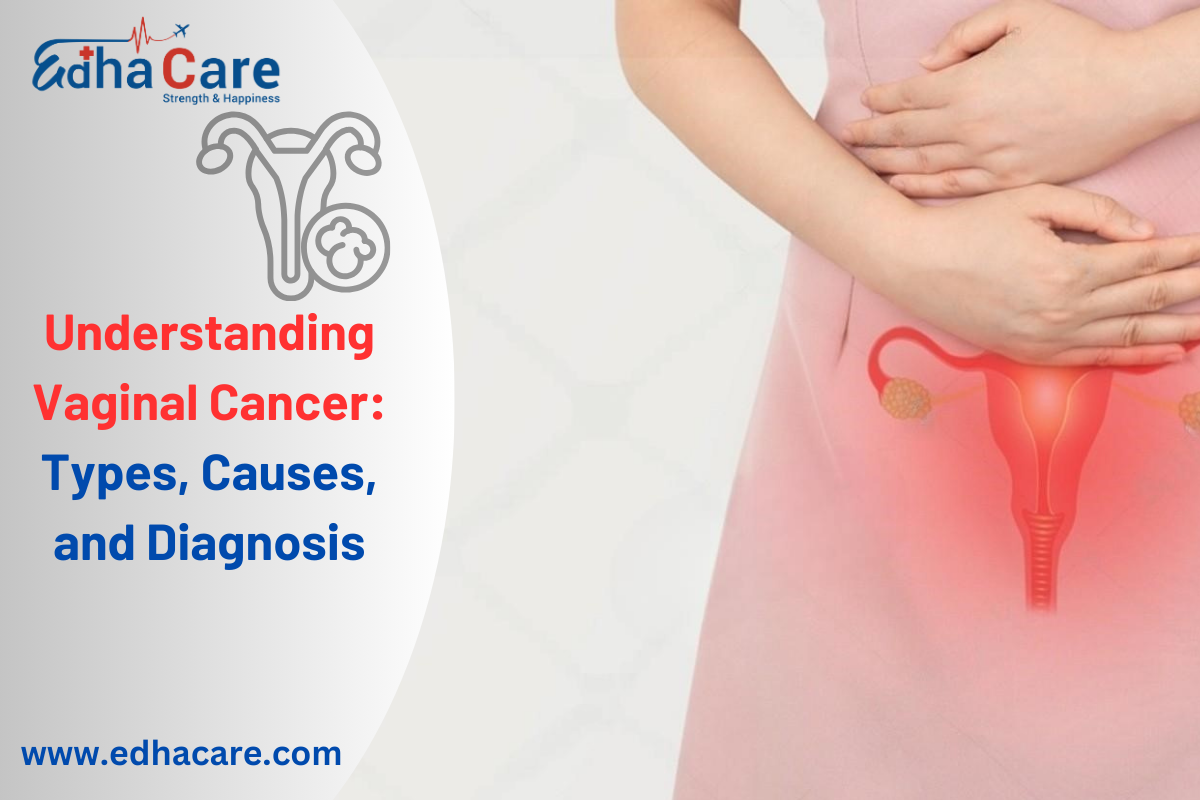Vaginal cancer, though compared to different gynecologic cancers, although a long way much less unusual, it affords unique diagnostic and healing demanding situations. They are produced within the cells of the vagina and form a connective tissue that connects the uterus to the pelvis. As with many varieties of cancers, early detection increases the achievement of treatment. However, because of its vicinity, and regularly asymptomatic in its early stages, Vaginal cancer can be tough to diagnose till it has progressed. Once recognized, a multidisciplinary technique involving surgical procedures, radiation therapy, chemotherapy, or an aggregate thereof is used to efficiently manipulate the ailment and improve patient effects.
One of the main obstacles in the prevention of cervical cancer is its subtlety in its early stages. When symptoms are present, they’ll mimic less intense situations or continue to be completely asymptomatic. This frequently results in behind-schedule diagnosis, with most cancers progressing earlier than its miles identified. Consequently, hit treatment consequences are particularly dependent on early detection and intervention.
In this blog, we will take a closer look at the treatments available for Vaginal cancer, examining their effectiveness, aspect outcomes, and emerging trends in generalized medication. By dropping light on the modern kingdom of Vaginal cancer treatment, we aim to empower patients, carers, and healthcare specialists with the know-how they need to manage sickness with self-belief and a bright future.
What is Vaginal Cancer?
Vaginal Cancer is an extraordinary form of most cancers that starts evolving in the cells of the uterus, which might be the fibers of the muscle that join the uterus (uterus) to the pelvic floor. Cervical cancers normally happen within the cells lining the floor of the vagina. It can arise at any age but is commonly seen in women in their 50s. There are cancers of the vagina, including the maximum commonplace squamous cell carcinoma, which begins in skinny layers of cells lining the vaginal floor with rare occurrences of adenocarcinomas, which start in stem cells, melanoma, which starts in pigment cells known as melanocytes.

Treatment for Vaginal cancer, depends on the kind and stage of most cancers but might also encompass surgical operation, radiation therapy, chemotherapy, or an aggregate of these treatment. The diagnosis of Vaginal cancer varies, relying on elements as a part of most cancers, the combat in opposition to cancer and over one’s normal fitness. Early diagnosis and early treatment can enhance the possibilities of a successful treatment and lengthy-time period survival. Regular cervical exams and Pap smears are critical to discovering Vaginal cancer in their early stages.
Understand the Types of Vaginal Cancer
Vaginal cancer may be divided into different sorts based totally on the precise cellular kind in which most cancers originate. The most common types include:
- Squamous Cell Carcinoma: This type of vaginal cancer arises in a skinny layer of cells lining the surface of the vagina. It is responsible for the maximum number of cases of Vaginal cancer.
- Adenocarcinoma: Adenocarcinoma takes place in the epithelial cells of the vagina, which produce urine and different secretions. It is notably uncommon as compared to squamous cell carcinoma however it has a much worse diagnosis.
- Melanoma: Melanoma of the vagina originates from pigment-generating cells called melanocytes. While rare, it’s one of the maximum aggressive sorts of cervical cancers.
What are the Symptoms of Vaginal cancer
Vaginal cancers are a rare shape of most cancers that influences the liner of the vagina. Symptoms can vary depending on the place and area of the cancer. Here are some unusual symptoms and signs and symptoms.
- Abnormal vaginal bleeding: One of the most common symptoms of vaginal cancer is abnormal vaginal bleeding, such as bleeding after intercourse, bleeding between periods, or bleeding after menopause.
- Vaginal discharge: Women with cervical cancers have extraordinary vaginal discharge that can be fluid, bloody, or smelly.
- Pelvic ache: Persistent pelvic pain unrelated to menstruation, menopause, or any other recognized motive can be a symptom of cervical cancer.
- Vaginal lumps or lumps: In some instances, cervical cancer can cause a lump or lump in the cervix that a woman or her fitness care provider may sense all through a pelvic examination.
- Changes in Urination: Cervical cancer can cause urinary signs which include urinary frequency, urgency, or trouble urinating, mainly if most cancers are pushing toward close urine.
- Constipation: In advanced cervical cancers, ulcers can unfold to nearby organs including the rectum, causing signs and symptoms consisting of nausea or trouble in stools.
- Pain duration Intercourse: Sometimes aches or pain during intercourse, referred to as dyspareunia, may be a symptom of cervical cancer, particularly if it persists.
It is crucial to be aware that those signs also can be due to different, much less serious causes. However, in case you are aware of any of those signs, especially if they may be persistent or unique to you, it’s far more important to peer your fitness care provider for evaluation and analysis. Early detection and treatment can enhance the outcome of cervical cancer.
Causes of Vaginal Cancer
The exact causes of vaginal cancer is not always clear, but several risk factors have been identified :
- Human papillomavirus (HPV) Infection: HPV infection is an essential danger aspect for cervical cancers, particularly for excessive-danger infections consisting of HPV-16 and HPV-18.
- Smoking: Tobacco use, particularly heavy persistent smoking, will increase the danger of diverse cancers, together with vaginal and cancer Chemicals in tobacco smoke can harm DNA and have improved the possibilities of cells developing cancerous mutations.
- Age: Cervical cancers are extra commonplace in girls aged 50 years and older. However, it could arise at any age.
- History of Cervical Cancer: Women who’ve been diagnosed with cervical cancers or precancerous cervical lesions are at improved risk of growing cervical cancers.
- DES Exposure: Diethylstilbestrol (DES), an artificial estrogen prescribed to pregnant women in the 1940s and 1970s to prevent miscarriage. Preventing abortion, increases the risk of endometriosis, and endometriosis, such as cervical cancers, is extended in ladies, including vaginal cancer.
Diagnosis of Vaginal Cancer
Early detection of vaginal cancer is critical for a successful treatment. The following tests and techniques may be used to discover and diagnose vaginal cancers.
- Pelvic Exam: A pelvic exam permits a fitness card issuer to visually inspect the vagina, uterus, and surrounding tissues for any abnormalities or symptoms of cancerous growth.
- Pap Smear: In a Pap smear, cells are accumulated from the cervix and uterus and tested below the microscope for any abnormal modifications. Although Pap smears are frequently used to display cervical cancer, they also can stumble on abnormalities that can imply vaginal cancer.
- Biopsy: If unusual tissue is discovered at some point during a pelvic exam or Pap smear, a biopsy may be done to collect tissue samples for further trying out. The biopsy confirms the presence of most cancer cells and might stumble on cancerous cancers of the vagina and half of it.
- Imaging Tests: Imaging assessments such as ultrasound, computed tomography (CT) scans, magnetic resonance imaging (MRI), or positron emission tomography (PET) scans are used to assess the extent of most cancers and the presence of lymph nodes the circulate has unfolded to adjoining organs or.
Treatment Options for The Cancer
The preference for treatment for cervical cancer depends on several factors, inclusive of the sort and stage of most cancers, as well as the affected person’s trendy fitness and therapy options. Treatment may involve one or more of the following approaches:
- Surgery: Surgery is commonly the number one treatment for cervical cancers and may encompass the removal of cancerous tissue at the rims of wholesome tissue (lumpectomy) or the elimination of elements or all of the vagina (vaginectomy). In a few instances, the nearby lymph nodes can also be removed to see if the cancer has spread.
- Radiation Therapy: Radiation therapy makes use of radiation to goal and destroy most cancer cells. It can be used as a primary treatment for early-level cervical cancer or in a mixture with surgical operations for more superior instances. External radiation therapy and brachytherapy (inner radiation therapy ) are the two main types of radiation therapy for vaginal cancer.
- Chemotherapy: Chemotherapy involves the use of powerful drugs to kill cancer cells or stop them from growing and dividing. It may be used before surgery to shrink the tumor, after surgery to kill any remaining cancer cells, or in combination with radiation therapy for advanced or recurrent vaginal cancer.
- Targeted Therapy: Targeted therapy drugs work by targeting specific molecules or pathways involved in the growth and spread of cancer cells. While targeted therapy is not yet standard treatment for vaginal cancer, ongoing research is investigating its potential role in improving outcomes for patients with advanced or recurrent disease.
- Immunotherapy: Immunotherapy harnesses the body’s immune system to recognize and attack cancer cells. While still in the early stages of research, immunotherapy holds promise as a potential treatment for vaginal cancer, particularly for tumors that express certain biomarkers or have high levels of immune cell infiltration.
Conclusion
In conclusion, Cervical cancer is a rare but serious sickness that requires early detection and suitable treatment. By understanding the reasons, causes, and techniques of cervical cancer diagnosis, healthcare experts can increase customized treatment plans that will enhance results and first-class of existence for affected people. Continued studies and advances in treatment offer a wish for higher results and survival prices for cervical cancer sufferers.
FAQ’s
- What is Vaginal cancer?
Cervical cancer is a rare shape of most cancers that begins within the cells of the vagina, which are the fibers of the muscle that connect the cervix (uterus) to the pelvis. There are many types of cervical cancer, but the most commonplace is squamous cellular carcinoma, A thin layer of thin cells lining the vagina. Other types include adenocarcinoma, melanoma, and sarcoma even though these are rare.
- What are the symptoms of vaginal cancer?
Symptoms of vaginal cancers can include unusual vaginal bleeding, specifically after menopause or intercourse, vaginal discharge, ache or stress vaginal discharge, vaginal discharge, or ache in the course of sexual intercourse. These signs and symptoms can vary depending on the stage and type of most cancers but normally suggest the need for scientific checking out. Early detection through ordinary rectal exams and Pap smears is critical for early treatment and precise outcomes.
- At what age can you get Vaginal cancer?
Age increases the risk of Vaginal cancer. Because ovarian cancers are rare, the expanded chance continues to be very low. Approximately 40 out of 100 (approximately 40%) arise in girls 75 years of age and older. Cervical cancer is extremely rare in ladies under 40 years of age.

